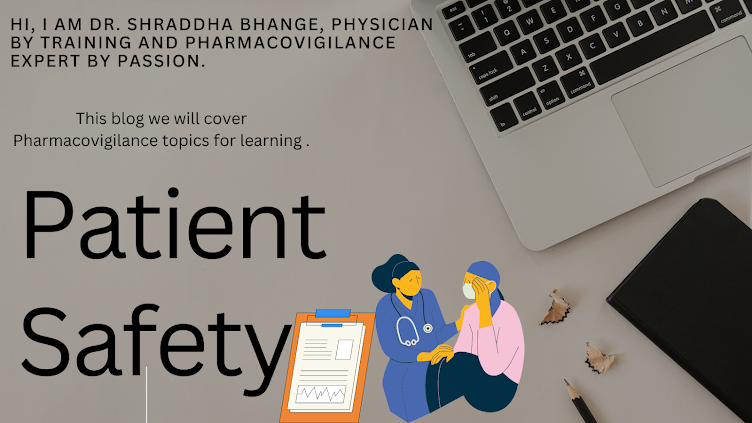If you have worked in mid to senior roles in PV, you may have across this dilemma where we need to continuously convince, communicate and influence other non pharmacovigilance departments regarding the importance of pharmacovigilance. And the more difficult task for someone in leadership is to also break the myth that "PV is a cost center" meaning PV does not bring any money and on contrary we have to invest the money in running the pharmacovigilance department.
And the basis of this argument, is actually coming from the fact that, pharmacovigilance requires setting up the call center (toll free number, telephony and employees working 24/7 to handle the calls), then collection of adverse event via other sources, safety database (very costly licenses), and other application supporting safety database, costly aggregate reporting applications, signal detection applications, so on and so forth. All this applications need to be validated and upgraded every time, hence this is never ending payments to the application owners. Also its a niche area so the human resource have to be highly trained and experts (pharmacists, doctors) so this also adds to cost. Moreover the inspection and audits add to the cost. So what people perceive does have the basis? Owing to all of this factors, there is always an ongoing struggle to get more budget and investment for pharmacovigilance related assignments in PV department.
How do we change this perception? No definite or one size fits all answer. But one thing we can do is to convert our data that we analyze and the outcomes we generate from this data into meaningful and relevant easy to understand impact and value we create for patients.
This are thinking points for each person working in pharmacovigilance and not for the department heads, because as a working professional even when we work as data entry, we need to know the value and impact and importance of our own PV work we do. Additionally we need to prepared to also spread the awareness and message to others whenever needed.
Key components that can be used for building our case
1. Regulatory expectations:
Understanding and complying to the regulatory guidance is not an easy task. While the regulatory affairs department is the one leading the dialogue and ensuring the compliance, pharmacovigilance is the one who is implementing and ensuring we have documented evidence to showcase our compliance to regulatory authorities.
Markets the drug is being marketed are covered by that country's pharmacovigilance regulation from national health authorities. Although at high level the PV requirements remains consistent they are changing, evolving and differing at country level This needs to be showcase on how we meet those specific country requirements.
Having a core data available that can be presented regarding the most complex health authorities requirements and how PV meet them with ongoing addition of examples on changes adapted to meet this HA compliance will make it easy for non-PV leadership to also understand importance. E.G. Instead of showcasing we met FDA requirements, add and example that FDA requirements and give example on them how they were met and what was the outcome.
2. All is well until its not /Inspections
Build and maintain a database on pharmacovigilance inspections done by various regulatory inspections in terms of name of health authority, type of inspection, duration, inspectors, findings and category of each finding, outcome of inspection, what were corrective and preventive actions implemented. Talk about the outcome especially positive how it saved money in terms of not having non compliance.
3. Outsourcing vs inhouse
The age old dilemma of having a pharmacovigilance department in pharma company or to outsource the PV to CRO/KPO/BPO (Vendors). Both has its own merits. Clear, Definite and Ongoing continuous evolving PHARMA-Vendor model of partnership serves as the best solution. For a pharma company a due diligence on Vendor is must i.e. are the process set, is it working model, what would be cost of implementation, how much oversight will be needed. Ultimately having an actionable plan that can be referenced in terms of the business value the vendor is bringing is must.
4. Data points that can be used
While showcasing the impact and value pharmacovigilance creates, the easiest data points is volumes i.e. how adverse events are received and processes (ICSR volumes), submission compliance ( timelines met to submit to each health authority) how many aggregate reports processed ( PSUR, DSUR, PADERs), how many articles reviews, how many data sources screened for signals, number of signal identified and validated.
The tricky data points that are difficult to put in coherent and relatable manner are what this means for business and patients. For this we need to build stories, if a signal is validated how was it addressed and how it helps patients, if there was a health authority request how was it managed. If there was non required ask by health authority and we could say no and it was accepted e.g. conducting a phase IV study, how much money was saved etc.
Written by:
Dr. Shraddha Bhange.
Connect with me Via comments below. (I do not respond to
Facebook/Instagram messages)
Support the cause of better rural education with me: ThinkSharp
Foundation http://thinksharpfoundation.org/#home


No comments:
Post a Comment
Please share your suggestions, they are most welcome!